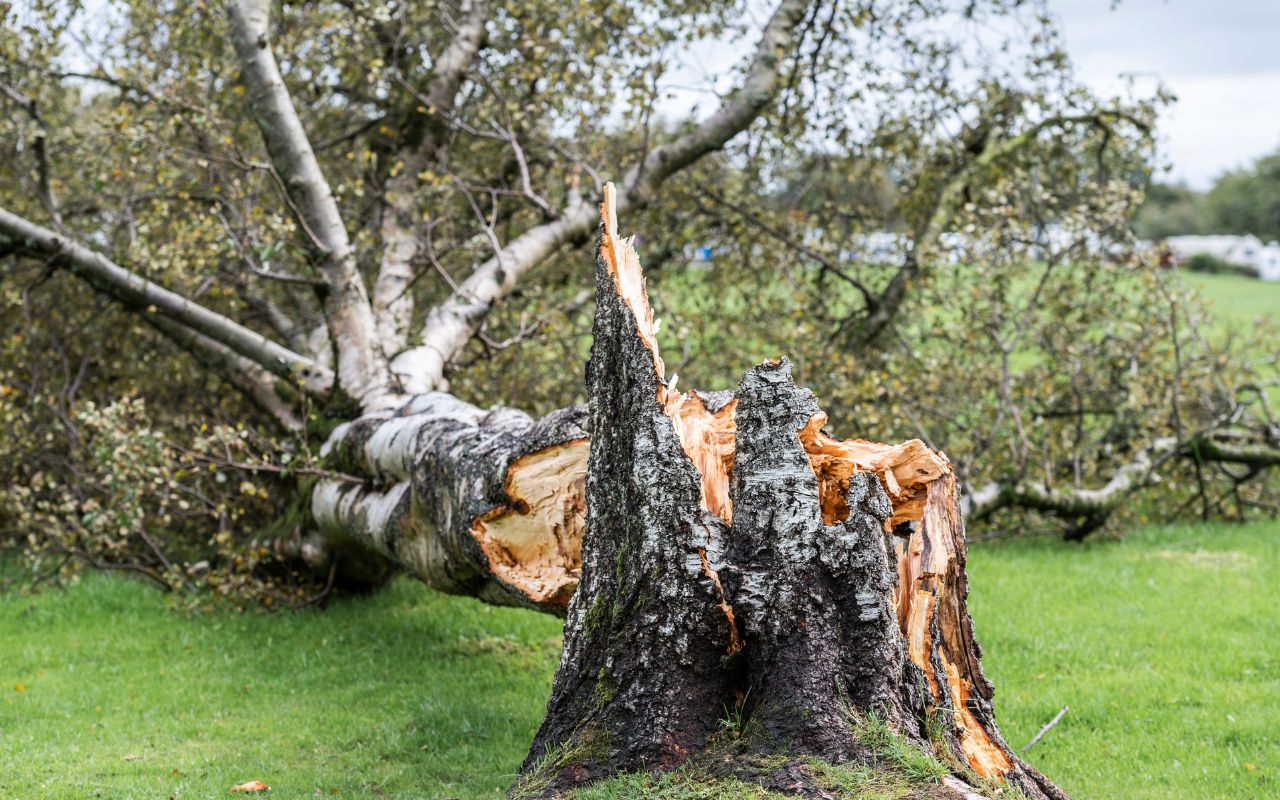
Tree damage can compromise safety and lead to costly repairs if not addressed. Knowing how to assess tree damage effectively is crucial, especially following storms or environmental stress. With these assessment techniques, you can determine whether a tree needs intervention, helping you maintain a safe and healthy landscape.
Steps to Assess Tree Damage
Examine the Canopy and Leaf Condition
Leaves and branches are often the first indicators of damage, particularly after a storm.
- Broken or hanging branches: Inspect the canopy for branches that appear broken or partially attached, as they pose falling hazards.
- Leaf discoloration: Yellow or brown leaves outside the normal season may suggest root damage or compromised water absorption.
- Defoliation or leaf drop: Severe defoliation can indicate a tree under stress or experiencing shock from recent damage.
Canopy damage can reveal the extent of stress or shock, helping you prioritize care and determine if professional pruning is needed.
Check for Branch and Limb Integrity
Branches are critical in assessing a tree’s overall stability.
- Split branches: Splits within branches signal stress fractures, which increase the likelihood of limb breakage.
- Cracked or weakened limbs: Inspect limbs for cracks or fissures, especially in high-stress areas near the trunk.
- Multiple branch damage: Widespread damage across branches often indicates a larger structural issue requiring immediate action.
Assessing branch integrity is essential to prevent potential hazards, particularly in high-traffic or windy areas.
Evaluate the Trunk and Bark
The trunk holds essential information about a tree’s core health. Look closely for signs of recent or existing damage.
- Cracks or cavities: Deep cracks or hollow areas in the trunk weaken its structure, making the tree susceptible to falling.
- Loose bark or scars: Bark that appears loose or has scars may suggest past trauma or disease impacting tree stability.
- Fungal growth: Mushrooms or fungi at the base can indicate internal decay, a red flag for potential collapse.
Examining the trunk thoroughly helps in understanding the tree’s internal condition and whether removal might be necessary.
Inspect the Root System and Soil
Damage often impacts the roots, affecting stability and nutrient absorption.
- Root exposure: Exposed roots due to erosion or construction can destabilize a tree and lead to nutrient deficiencies.
- Compacted soil: Soil that’s tightly packed around the roots limits water and oxygen, stressing the tree and stunting growth.
- Root crown inspection: Signs of swelling or decay near the root crown can indicate serious health problems needing attention.
The root system is the foundation of a tree’s stability, so monitoring it closely is vital, especially after extreme weather events.
Reach Out for Expert Tree Assessment
Assessing tree damage can be complex and may require an expert eye for accurate diagnosis. If you spot concerning signs or need a professional assessment, contact us at (443) 400-6964. Our team in Baltimore is here to ensure the safety and health of your trees.
